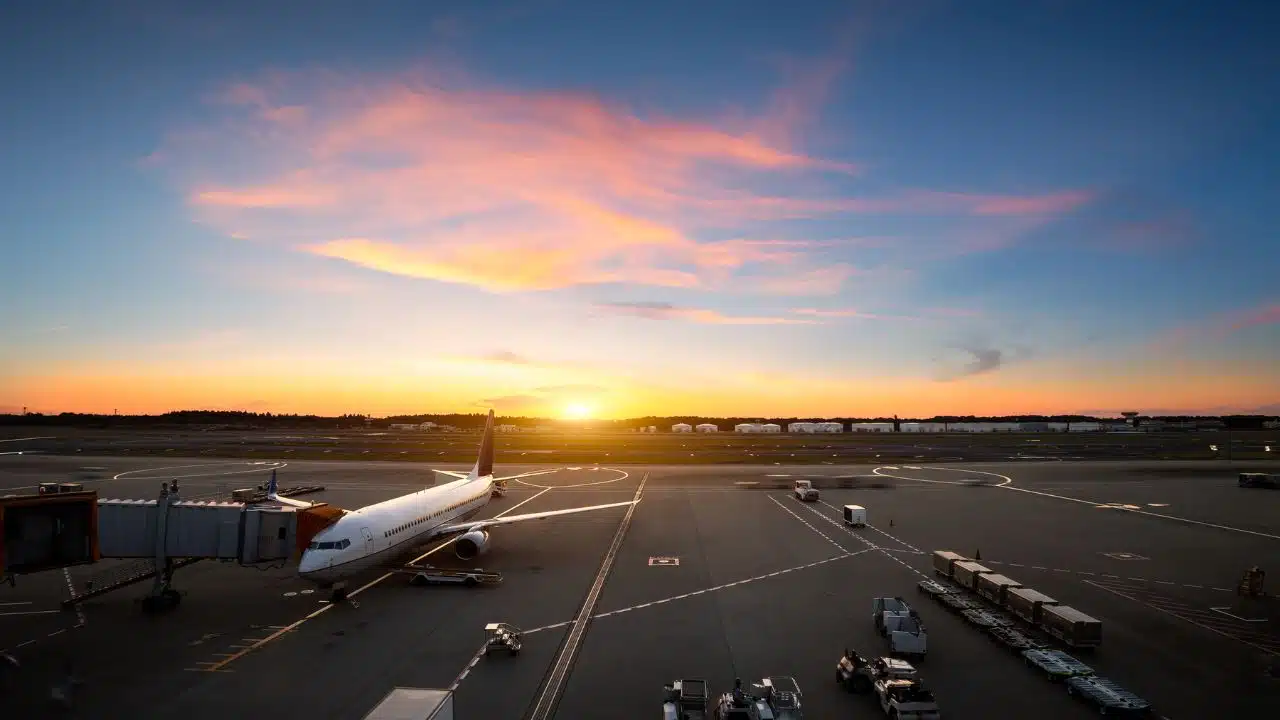Be honest. When you think of the world’s biggest airports, you’re thinking of those bustling hubs that cater to tens of millions of passengers every year and sit atop the pinnacle of the busiest transit sites in the world. It would make sense if those airports were one and the same, the largest and most impressive buildings hosting the largest number of travelers every year. But bigger doesn’t always mean better, and you might be surprised to find that some of the biggest airports in the world don’t come close to making it onto the list of busiest airports (though some of them do). So, if you’ve been picturing yourself dealing with crowds at the busiest airports, it’s time to prepare yourself for traveling through these behemoth airports that put the “giant” in “travel giant.”
This post may contain affiliate links. Making a purchase through our site may earn us a commission at no additional cost to you. This does not affect the independence or quality of our content.
Table of Contents
- The 9 Biggest Airports in the World
- 1. King Fahd International Airport (299.6 mi²)
- 2. Denver International Airport (53 mi²)
- 3. Kuala Lumpur International Airport (39 mi²)
- 4. Istanbul International Airport (29 mi²)
- 5. Dallas/Fort Worth International Airport (26.9 mi²)
- 6. Southwest Florida International Airport (21.2 mi²)
- 7. Orlando International Airport (19.2 mi²)
- 8. Washington Dulles International Airport (17.5 mi²)
- Honorable Mention: Beijing Daxing International Airport (10.3 mi²)
- What Is the Biggest Airport in the World?
- What Is the Largest Airport in the US?
- What Is the Number 1 Busiest Airport in the World?
- Experience the Biggest Airports in the World Flying with Next Vacay
The 9 Biggest Airports in the World
The biggest airports in the world aren’t only attention-grabbing for their size. From their captivating design to their surprising efficiency, these eight biggest airports in the world, plus an honorable mention, aim to impress in more ways than one.
1. King Fahd International Airport (299.6 mi²)
It doesn’t get any bigger than the king, and the name says it all. King Fahd International Airport runs away with the title of the biggest airport in the world. At a staggering 299.6 square miles, the King Fahd International Airport isn’t just bigger than other airports, it’s bigger than entire countries—from Singapore to Bahrain. Its sprawling complex contains a mosque, a residential community, greenhouses to support the airport’s landscaping, and a Royal Terminal for the royal family’s use. So it’s no surprise that other airports don’t even come close in size.
What is surprising is its passenger traffic: King Fahd doesn’t even scratch the top 50 of the world’s busiest airports, let alone the top 10. Currently, the airport caters to just under 10 million annual passengers, far less even than the country’s two other main airports in Jeddah and Riyadh. But a mentality of ‘Go big or go home’ is set to see an expansion in the coming years that will increase the number of runways at King Fahd Airport and accommodate up to 185 million passengers. So it’ll likely be quite a while before any other airport comes for the king’s crown.
2. Denver International Airport (53 mi²)
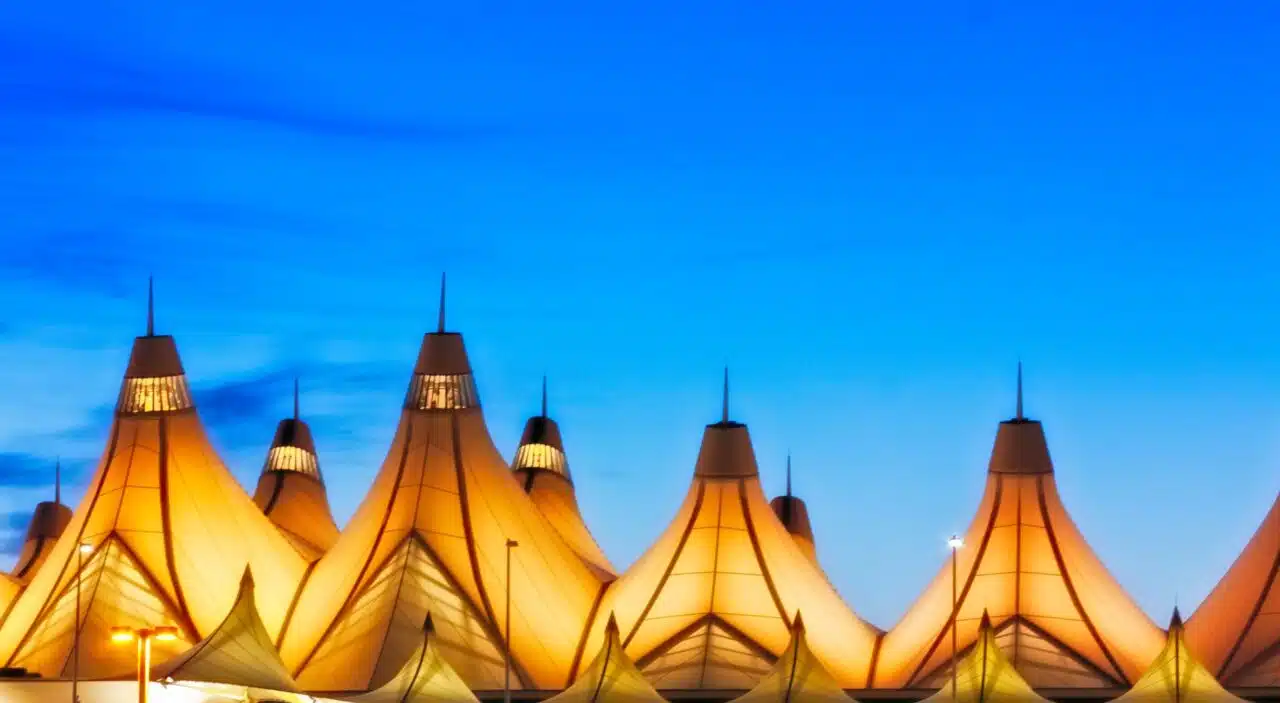
The Denver International Airport may not measure up to the frankly staggering King Fahd Airport; nonetheless, it’s nothing to sneeze at. One-third the size of the city of Denver, the airport covers an impressive 53 square miles of space. Plenty of that land lays empty for expansion, with plans already in place for future development.
But the city has made good use of the land that the Denver Airport already occupies. The airport’s one terminal, the Jeppesen Terminal, contains three concourses and a total of 179 gates, which serviced over 77 million passengers in 2023, a record for the Colorado airport.
But the airport doesn’t just rush passengers from security to their gate. In contrast, leisurely spaces abound to help passengers and even the people of Denver relax and recharge, with public art exhibitions, outdoor patios to take in views of the distant Rockies, and seasonal delights like mini golf in the summer and ice skating in the winter. Denver Airport makes itself into more than just an airport—it’s an experience for anyone traveling through.
3. Kuala Lumpur International Airport (39 mi²)
Singapore’s award-winning Changi Airport might get all the love for its style, but in terms of size, Kuala Lumpur has it beat. Coming in as the third biggest airport in the world, Kuala Lumpur International Airport has grown from its humble beginnings as agricultural farmland into the largest airport in Asia. The airport is massive in size, hosting two separate terminals, Klia Terminal 1, the main terminal, and Klia Terminal 2, which services low-cost carriers.
What makes Kuala Lumpur International Airport so unique is that its two terminals function almost as two separate airports. Each building has its own facilities, and their entrances even sit several minutes apart, making them completely independent. But together, they service nearly 50 million travelers per year.
And while the airport may be missing Changi’s signature waterfall, travelers passing through Kuala Lumpur can still unwind and relax with a stroll through the jungle boardwalk located, you guessed it, inside the airport, for a bit of nature amid the concrete jungle.
4. Istanbul International Airport (29 mi²)

“The Great Move” marked the relocation of Ataturk International Airport to the newly built Istanbul International Airport in 2018. Thus, what many dubbed the largest move in aviation history solidified Istanbul Airport’s status as the fourth-largest airport in the world. And while it may be smaller than its predecessors, at 29 square miles, it manages to steal the show as one of the best international airports in the world.
With museum-like terminals boasting paintings and sculptures, fine dining restaurants that offer a taste of Turkish fare, and even a luxury hotel on site—Istanbul Airport feels less like an airport and more like a destination in and of itself. And odds are, you won’t even feel like you’re in a terminal when you’re walking through. Towering columns and the vaulted canopy ceiling give the airport an airy feel, and natural light chases away even the inclination of claustrophobia—a staple of so many smaller airports.
While Istanbul Airport is already leagues and above the largest infrastructure project in Turkey’s history and one of the busiest airports in the world, future plans aim to accommodate a maximum capacity of 200 million passengers when construction is complete.
5. Dallas/Fort Worth International Airport (26.9 mi²)
Taking up an impressive 26.9 square miles, Dallas/Fort Worth International Airport may not dwarf entire countries, but it is large enough to qualify as its own city. Along with a designated zip code, it even has its own police and fire stations.
While that may not be enough to convince you to move in, the over 100 retail stores for shopping until you drop and more than 130 restaurants to unwind with a tasty bite and a cold drink may have you reconsidering. The Dallas/Fort Worth Airport promises a unique experience encompassing everything from classic shoe shine stations to an art walk with locally and internationally sourced pieces.
But this is an airport and the hub for a major airline, American Airlines, so it’s not just what Dallas/Fort Worth houses inside its walls that interests travelers; it’s what lies beyond them. And from Dallas, the options are both near endless and nonstop. From DFW, travelers can reach every major city in the contiguous US in under four hours. Additionally, they can fly to 254 destinations worldwide, with more nonstop destinations than any other airport in North America. And despite its large footprint, or rather because of it, Dallas/Fort Worth is the world’s largest carbon-neutral airport.
6. Southwest Florida International Airport (21.2 mi²)
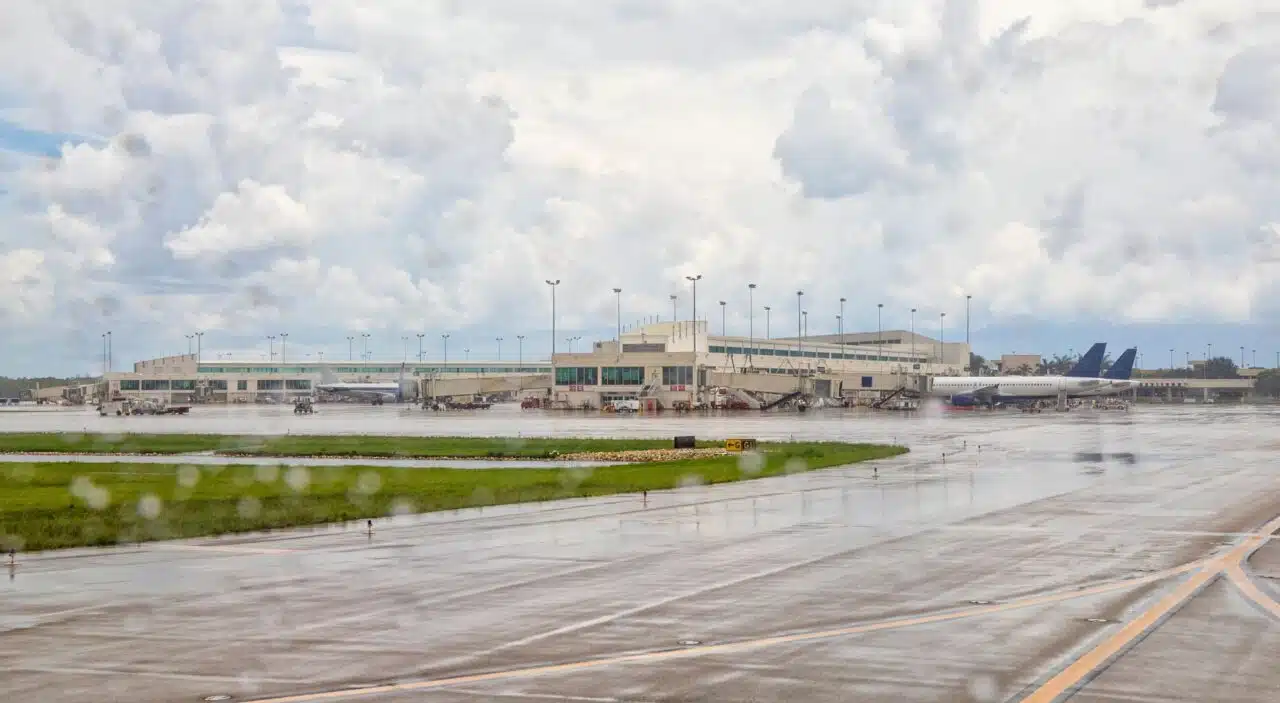
Southwest Florida International Airport is a quiet airport of 10 million annual passengers that lies sandwiched between Miami International Airport, one of the ten busiest airports in the US, and the bustling city of Tampa. But don’t let this book’s cover fool you; Southwest Florida International Airport is much more impressive than first glance would have you believe.
That’s primarily due to the massive amount of ground it covers. At 21.2 square miles, it beats out every other airport in Florida and most airports in the country to make its mark as the sixth-biggest airport in the world. So how did a small airport serving modest-sized cities like Fort Meyers and Naples come to claim so much land? Well, amid golf courses and swampland, much of the land that makes up Southwest Florida International Airport is, you guessed it, more swampland.
Around 6,000 acres of land is protected swamp and has been set aside for conservation. So, on your next trip to the southwest of Florida, keep an eye out your window, and you may just be treated to the site of the swamplands that make a deceptively small airport one of the largest in the world.
7. Orlando International Airport (19.2 mi²)
Orlando International Airport can’t claim to be the biggest airport in Florida. However, it still makes a splash as the busiest airport in the state, with over 57 million passengers in 2023. And is it any surprise its runways stay busy with juggernauts like Disney World, Universal, and Legoland parked in its backyard?
The airport also services nonstop flights to over 150 destinations, making it one of the most well-connected airports in Florida and the perfect gateway to Florida’s biggest playground. So, to accommodate all that traffic, Orlando puts its sprawling 19.2 square miles to good use. The airport houses three terminals, including the new Terminal C, a Hyatt Regency hotel, several Airport People Movers (APMs), and even a private high-speed rail station.
But despite all it packs inside, Orlando doesn’t feel crowded, and that’s largely due to their design aesthetic, which emphasizes air, water, and sky for a bright and airy experience that screams Florida in every sense.
8. Washington Dulles International Airport (17.5 mi²)

It’s hard to imagine that when Washington Dulles was being built in 1958, they knew it would grow into one of the biggest airports in the world. Or maybe they did know. Chosen for its ample open space, the 17.5 acres of rural farmland acquired to build Washington Dulles International Airport allows for room to grow. And grow the airport has.
Since opening in 1962, the airport has undergone several expansions, from the terminal in 1996 to the International Arrivals Building in 2011. Fully built out, the airport is expected to handle 55 million passengers a year, more than double its current passenger traffic of 25 million. And despite the location, some 26 miles outside of the city, its striking design and revolutionary mark on aviation history ensure Washington Dulles Airport fits right in among the landmark architecture and history of the US capital.
Honorable Mention: Beijing Daxing International Airport (10.3 mi²)

Sitting on just over 10 square miles of land, the Beijing Daxing International Airport can’t count itself among the biggest airports in the world. However, with a structure that spans over 1,000,000 square meters, it can claim another title: the biggest airport terminal in the world.
Instead of the typical linear design of most global airports, Daxing International is shaped like a six-legged golden starfish. While this may seem an odd choice on the surface, the shape was very deliberate. The architects wanted to design a compact building that, despite its size, would minimize walking distances. From the security checkpoint at the center of the starfish, the furthest gate is only an eight-minute walk away.
While the airport aims to make waves in the number of passengers it plans to accommodate—100 million travelers by 2040—it’s already making headway in a significant area: environmentally. The building was designed with the environment in mind, with a rainwater harvesting system that collects rainwater from the building and a central heating system that absorbs heat from the airport operations, all to reduce the airport’s carbon footprint. So, while it may not be leading the pack in terms of outright acreage, Beijing Daxing Airport is undoubtedly leading the charge toward a more environmentally friendly travel space.
What Is the Biggest Airport in the World?
The title of “Biggest airport in the world” goes to the King Fahd International Airport in Saudi Arabia, at nearly 300 square miles. Cited in the Guinness Book of World Records, the airport and the land it sits on go on for miles and miles and miles. And it’s not just the airport terminal itself that’s impressive. Two parallel runways stretch over 4,000 meters each, accommodating even the largest aircraft, and the iconic control tower watches over it all from 262 feet in the air.
Every way you look, the King Fahd International Airport towers above and beyond the competition to cement its status as the biggest airport in the world.
What Is the Largest Airport in the US?
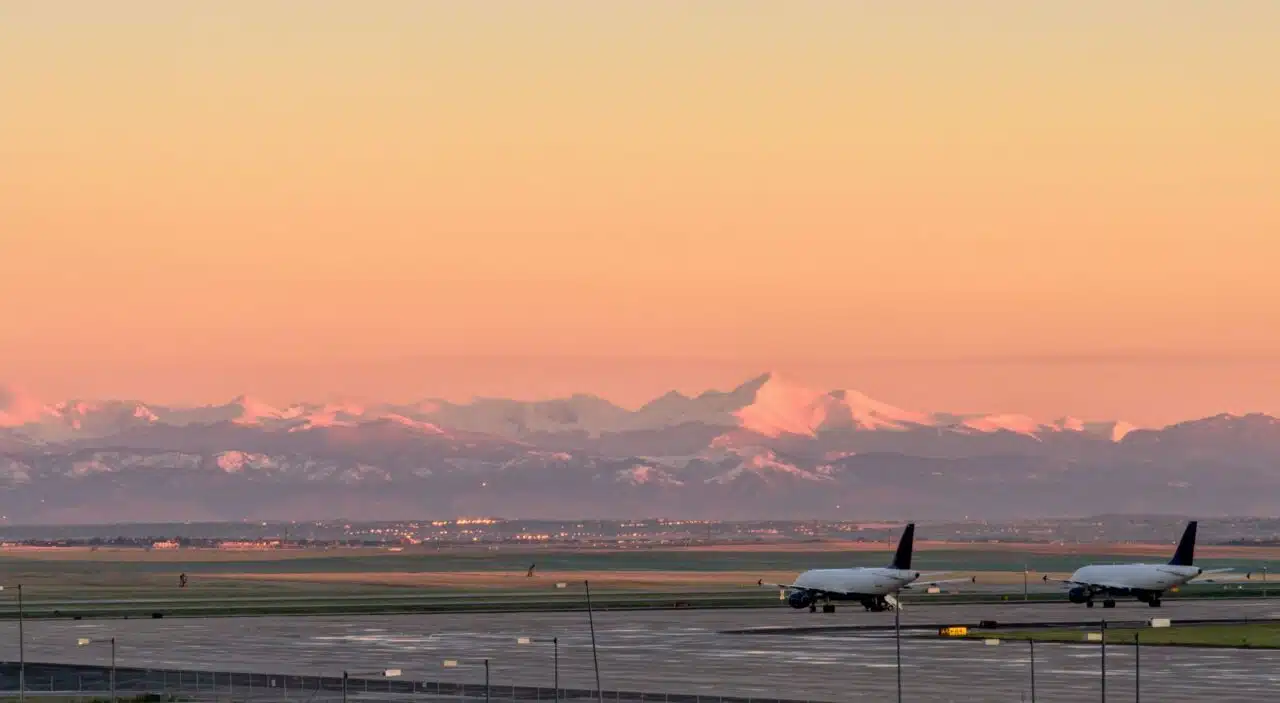
While the Denver International Airport may be runner-up to the king, it dominates the competition everywhere else, including at home in the US. At an impressive 53 square miles, it’s more than double the size of the next largest airport in the US in Dallas. But odds are, you won’t be thinking about the space here. Instead, you’ll be busy getting lost in it, from kicking back on the outdoor patios and admiring the views to wandering among the art installations that decorate the airport walls, ceilings, and even floors. Denver International Airport takes its 53 square miles and runs with it to give travelers a little taste of Colorful Colorado without having to step a single foot offsite.
What Is the Number 1 Busiest Airport in the World?
Bigger doesn’t always mean better, and the number one busiest airport in the world is proof of that. Hartsfield–Jackson Atlanta International Airport doesn’t compare to the heavyweights of large airports, but it easily sweeps the competition in terms of traffic, handling over 104.6 million passengers annually.
The Atlanta International Airport isn’t what many would call small by any measure, but it’s admittedly less impressive than the world’s largest airports. Sitting just outside of Atlanta’s bustling downtown, the airport takes up a little over 7 square miles—a mere fraction of the King Fahd Airport in Saudi Arabia. But one could argue that size is the only thing this airport lacks. Well, that and competition. With no smaller airports servicing the city, Atlanta reigns as king of the South, servicing 275,000 international and domestic travelers daily with an average of 2,700 arrivals and departures. Despite handling such high volumes with less than half the space of larger airports, Atlanta delivers travelers one of the most efficient airport experiences to be found in North America. And in an airport that sees more passenger traffic than anywhere else in the world, that is an impressive feat.
Experience the Biggest Airports in the World Flying with Next Vacay
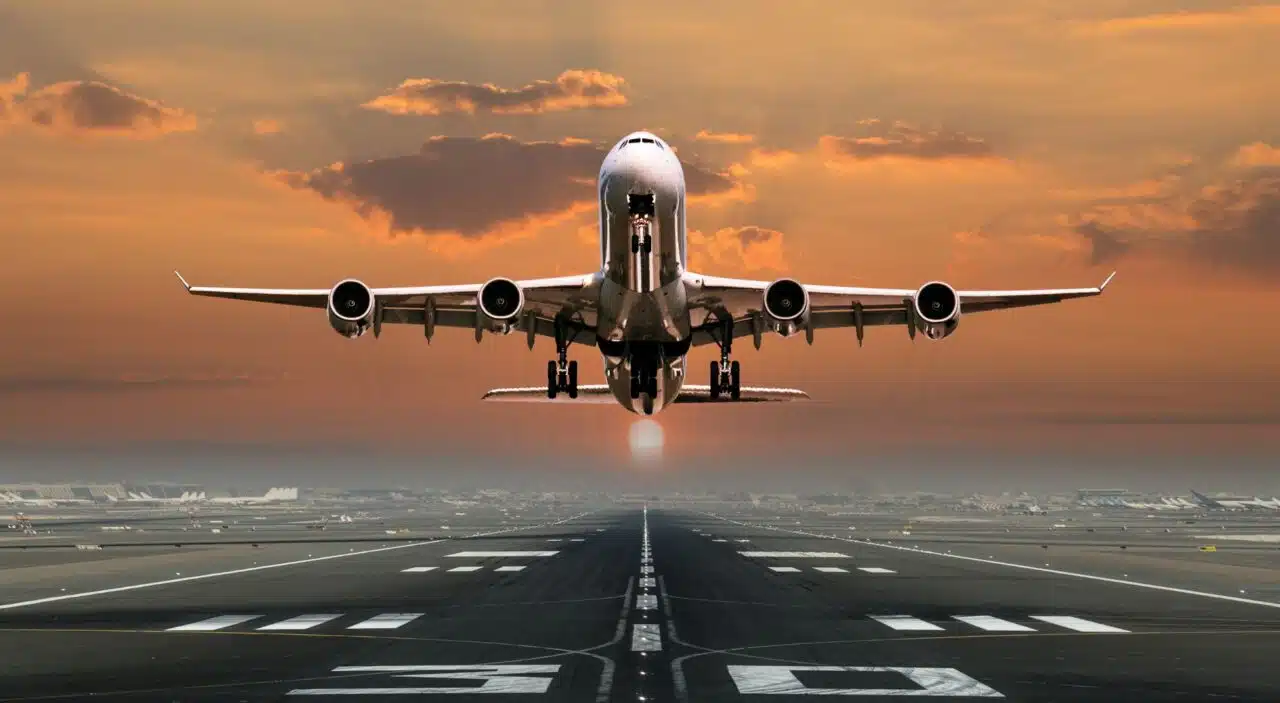
From the breathtaking size of King Fahd International to the beautiful design of Istanbul Airport, the biggest airports in the world are waiting for you. Experience them with Next Vacay and get hand-vetted deals delivered right to your inbox. As travelers, we know a good deal when we see one, and every flight is considered with your comfort in mind—so get ready for savings, flexibility, and destinations you’ll have to see to believe. If you’re ready to explore the world’s biggest airports and best destinations, you can now with Next Vacay.
